Were you aware that the average chicken farmer invest nearly $500,000 a year and only makes about $18,000? Or even that in the 1970s the top five beef packers controlled 25 percent of the market, and now the top four are in control of more than 80 percent? How does it make you feel that you don’t have the right to know where your meats are coming from, or if they are at risk of containing a deadly strain of Escherichia Coli?
The film Food Inc. puts the power of emotion to use by exploring the reality of these facts within the documentary. The film’s aim is to explore what’s, “behind the veil of corporate farming,” and it does so by providing the viewer with powerful evidence that demonstrates the authority that the big food corporations possess over their farmers, workers, and also regulatory agencies. Experts such as Michael Pollan, Eric Schlosser, an investigative writer, Barbara Kowalcyk, a food safety advocate, and Joel Salatin, an American holistic farmer all give the film high credibility. After viewing the film, I felt somewhat dumbfounded by the things that I saw. First, comprehending the grasp that the big companies like Tyson, and Purdue have on their farmers disgusted me. Carole Morison, a former Purdue chicken farmer, has had enough of what she has deemed to be immoral farming. She is interviewed about her experience and states, “I understand why farmers don’t want to talk, because the company can do what it wants to do as far as pay goes because they control everything.” This quotation, and the interview, shows how one-sided these contracts with the big food companies truly are. Her contract was terminated due to her lack of interest in changing her chicken coups to Purdue’s standards, and her disgust with the antibiotics and abnormal growth of her chickens. Not only do they control the farming portion of the meat packing industry, but the film unveils a far more concerning issue. It explains how many of the members of the FDA and USDA are former members of the beef industry. Notably, during the Bush administration, the chief of staff of the USDA, James F. Fitzgerald, was the former chief lobbyist for the beef industry, and also the head of the FDA, Lester M Crawford Jr., was the former executive VP of the National Food Processors Association.
This portion of the film leads into one of the most heartfelt pieces of evidence, children dying of a particular deadly pathogen in contaminated foods. E. coli 0157:H7 is the strand of E. coli that killed Kevin Kowalyck, son of Barbara Kowalyck, whose story is repeatedly shown throughout the film. Kevin is a victim of a foodborne illness. He was only two years and eight months old when the illness killed him in just twelve days! Barbara struggles to enact transformation in government regulation as we watch her bring the case of her son to state and federal courts to dispute new regulations. This horrifying tragedy is also very closely related to a portion of the book Food Politics, by Marion Nestle called, “Resisting Food Safety.” Nestle has a Ph.D, M.P.H., and is a professor of nutrition, food studies, and public health at NYU. In her research about issues of foodborne illness she enlightens the reader about the politics and power behind food safety. Her book provides data from the past thirty years on the number of outbreaks and deaths of certain pathogens, and brings forward the statement that the food corporations and the government aren’t doing their part to ensure the safety of the consumers. In addition, Nestle also gives us some insight into it being an unreasonable task for the FDA and USDA to oversee the entire food production in the United States. Only 700 FDA inspectors are responsible for overseeing 30,000 manufacturers, 20,000 warehouses, 785,000 commercial establishments, 128,000 grocery stores, and 1.5 million vending operations. To me this seems like a nearly impossible task, and the USDA doesn’t do much better considering that they have twice as large of a budget than the FDA and ten times the workers, according to her research. The USDA only regulates twenty percent of the food supply, and just fifteen percent of foodborne illness is reported under their jurisdiction in 2000! Marion Nestle’s aim of her piece is to provide stakeholders perspectives on the issues and how each parties’ goals are not aligned. The manufacturers claim that profit is maximizing shareholder wealth, but there has got to be a consensus to make safety the number one priority.
Consumer Reports, “You Are What They Eat,” is very closely related to the facts that Food Inc. displays in the film. This piece is aimed at the health conscious and concerned consumers, so it exhibits a variety of input from experts of science and other areas of expertise. The article’s purpose is to expose the benefits and risks behind the processed feed that is being given to our livestock. Food Inc. brings forward the issues of using corn to speed up the cows life spans so that they are able to be fattened and slaughtered within just 14 months! Consumer Reports takes a look at the use of other feed ingredients that are at risk of contamination. Yet, David Fairfield, the director of feed services for the National Grain and Feed Association argues that, “animal protein products, meat and bone meal, and blood meat are nutritional feed ingredients.” However, according to the CDC (Centers for Disease and Control Prevention) these processed feed ingredients have far more potential for being contaminated. The biggest issue that we are facing is linking the contaminations with actual human illness. There is just simply not a big enough system to control and inspect the origins all of the contamination. In 1997, a feed ban was enacted by the FDA to prevent infectious prions, or proteins that could lead to mad cow disease. However, the FDA’s enforcement of this ban has been very slim. They admitted that the results of their inspections were “severely flawed” due to a lack of compliance by the manufacturers. With this type of system that we have in place where these companies can skew and deflect attempts at inspections and regulation, we are not going to be able to enact change. Our government must to take control of the situation and spend the necessary capital to regain control of the food industry and ultimately provide safety to our consumers.
The final dispute of this matter concerns the question of organics. Blake Hurst, third-generation Missouri farmer and President of the Missouri Farm Bureau, provides his take on the matter in his published piece, “Organic Illusions.” This article allows Hurst to express his sarcastic tone and thoughts about the illusions of “going organic.” His only use of any evidence or facts come from his reference to a Stanford University study which brings forward the lack of nutritional difference between organics and conventionally farmed foods. However, there hasn’t yet been true evidence of any new studies that have been able to conduct their own data on the subject. I would be very shocked to see that organics were not far more likely to be higher in nutritional value or less apt to contain pesticides, fertilizer, and other harmful things. Another of Hurst’s key points is to illuminate the simple fact that conventional farming is efficient. He eludes to his own knowledge and opinion that it wouldn’t be possible to switch to organics because of its demand for land and labor. Yet there is no evidence that this is the case. Hust’s other claim is that the animals don’t care about the “story” behind their demise. His thought is that organic farming is solely about the ethical processes being used, and how the pesticides and fertilizers are harming the soil. Michael Pollan, author of Omnivore’s Dilemma, has a direct opposition to Hurst’s viewpoints. In the Pollan and Hurst Debate the Future of Agriculture, Michael Pollan explains how our farming system is “broken”, and the farmers who are supposed to be the providers are having trouble even staying afloat under the control of the big corporations. He brings forward the issues of corn being used for almost every food product and its lack of ability to be digested by our cattle. He also responds to Hurst’s comments regarding a switch to organic farming “syphoning” the food supply. Pollan states, “I challenge anyone to prove it, I mean so far, genetically modified crops have not produced increases in yield.” This is a very intriguing statement because a majority of the upside of conventional farming is built of the back of efficiency and higher yields. This is a debate that needs some more research, and several of these matters to be answered using scientific research.
The American food system has become an industrial machine. As consumers we have been unable to see the true issues that lay “behind the corporate veil” of farming. The moral, social, financial, and federal aspects of these issues all have yet to encompass change. Our government lacks the ability to regulate and raise inspections due to their control being overtaken by corporate and political giants. We must come together as consumers and demand change, especially if our government is unwilling to cast its authority over the big corporations. The consumers ultimately make the decision of which foods to purchase, and this may be our only avenue to spark a change directly.
Sources:
Batt, Andrew. “Pollan and Hurst Debate the Future of Agriculture.” Market to Market RSS. Weekly Journal Rural America, 16 July 2010. Web. 28 Feb. 2016. <http://www.iptv.org/mtom/story.cfm/feature/3661/mtom_20100716_3546_feature/video>.
Food, Inc. Dir. Robert Kenner. Perf. Michael Pollan, Eric Schlosser. Movie One, 2008. Web. <https://www.youtube.com/watch?v=2Oq24hITFTY>.
Hurst, Blake. “Organic Illusions – AEI.” AEI. The American, 1 Oct. 2012. Web. 28 Feb. 2016. <https://www.aei.org/publication/organic-illusions/>.
Kowalcyk, Barbara. “CFI | THE CENTER FOR FOODBORNE ILLNESS RESEARCH & PREVENTION | Kevin’s Story.” CFI | THE CENTER FOR FOODBORNE ILLNESS RESEARCH & PREVENTION | Kevin’s Story. Center for Foodborne Illness Research and Prevention, n.d. Web. 28 Feb. 2016. <http://www.foodborneillness.org/kevin-s-story.html>.
Nestle, Marion. “Resisting Food Safety.” Food Politics: How the Food Industry Influences Nutrition and Health. Berkeley: U of California, 2002. 27-61. Print.
Reflection Questions
Unit I / 10%
Using the homework, in-class workshops, revision workshops, etc.
- Describe your understanding of the “writer’s project”? How were you able to identify the texts’ “project”? Discuss your own “project” as it pertains to this particular blog article.
The writer’s project goes beyond the actual words and digs deep into diffusing the meaning behind it, or their reason for the piece. You must be able to understand the writer’s background and their point of view on the situation in which they are writing about. My own project of my blog article was aimed to get people’s attention about the lack of authority the consumers of this nation have in controlling our own food supply. And also to make people aware of how our food industry has been monopolized behind the scenes.
- Describe your completion of the “Sorting it Out” workshop? What sections were most beneficial to the development of your ideas—and why? Discuss how this workshop assisted in development of draft and/or assignment organization?
I used a lot of things from this helpful workshop to concise my ideas and synthesize some of the sources that I was writing about. I mainly used sections B, C, and E. They allowed me to separate my sources and then bring them all back together once I was able to establish each of the writer’s projects and interpret them into my own. I was then able to prioritize my draft based on the sources and also it made it much easier to understand where I wanted to tie them together.
- Describe your understanding of synthesis. What is its importance? How did it manifest within your drafts and/or final blog article? Provide examples.
Our class discussion and example of Kanye West and Miley Cyrus allowed me to understand synthesis much more. To me synthesis means being able to break down an author’s or artists work and get to the meaning behind it. This involves the use of words, but also is reliant on who they are as a person and the position that they hold in society, or power that they have to assert the information to the public. I think that I synthesized fairly well throughout my article, particularly after noting each subject or source that I used, I was able to break down their aim or reason behind their pieces in each case.
- Describe your own accomplishment (ofsomething) during this unit.
I accomplished being something more than just a technical robot-like writer. This assignment pushed me to understand the meanings behind a certain type of writing other than just a technical and formal essay. It also was nice to get a handle on concise writing and taking unnecessary “fluff” out of my work.
- Discuss the evolution of the main idea. Where did you begin (include the example) and show its progress (again, include example) throughout the drafting/revision process. To what do you attribute its evolution?
When I wrote my first draft of the assignment, I had written an extremely long lede. It really wasn’t much of a lede at all actually, but rather I began my draft like an essay format and provided a boring background of what was going to be in my article and also a thesis statement that was far too long. I began focused on what I thought was a good statement, it was along the lines of, big corporate business has consumed our food system, and the government is lacking to ensure that we are consuming safe and healthy foods. But as I came to understand more about what a good lede is I was about to really hone in on being specific and also getting the reader’s attention. I switch my whole focus to asking specific questions that would make the audience want to click on my article. It now reads, “Were you aware that the average chicken farmer invest nearly $500,000 a year and only makes about $18,000? Or even that in the 1970s top five beef packers controlled 25 percent of the market, and now the top four beef packers are in control of more than 80 percent? How does it make you feel that you don’t have the right to know where your meats are coming from, or if they are at risk of containing a deadly strain of Escherichia Coli?” This style came from our lede workshop and the article that we read in class about the tips for good ledes.
- Discuss what organizational strategies you implemented in order to structure this blog article. Provide examples from a section(s) of an earlier draft and other excerpts in later drafts to support your response.
I began to piece my article together based on the sources that we went through in class in chronological order. So, first I wanted to discuss Food Inc. because I knew I had a lot to say about the film, and it also was a great source of evidence to lead into the other texts. I then thought about which texts were most appropriate to go with the things that I was discussing, such as Kevins story and how Marion Nestle’s book dives deep into the issues of foodborne illness. I was also able to find an outstanding video source on the debate between Michael Pollan and Blake Hurst, and I used this video to talk about their opposition of the idea of organics with one another.
- Provide an example of the final draft where you successfully synthesize 3 texts in a concise and direct manner. Discuss how this evolved throughout the drafting process for you.
– This quotation, and the interview, shows how one-sided these contracts with the big food companies truly are. Her contract was terminated due to her lack of interest in changing her chicken coups to Purdue’s standards, and her disgust with the antibiotics and abnormal growth of her chickens. Not only do they control the farming portion of the meat packing industry, but the film unveils a far more concerning issue. It explains how many of the members of the FDA and USDA are former members of the beef industry. (from Carole Morison portion)
-To me this seems like a nearly impossible task, and the USDA doesn’t do much better considering that they have twice as large of a budget than the FDA and ten times the workers, according to her research. The USDA only regulates twenty percent of the food supply, and just fifteen percent of foodborne illness is reported under their jurisdiction in 2000! Marion Nestle’s aim of her piece is to provide stakeholders perspectives on the issues and how each parties’ goals are not aligned. The manufacturers claim that profit is maximizing shareholder wealth, but there has got to be a consensus to make safety the number one priority. (about Nestle’s piece)
– This article allows Hurst to express his sarcastic tone and thoughts about the illusions of “going organic.” His only use of any evidence or facts come from his reference to a Stanford University study which brings forward the lack of nutritional difference between organics and conventionally farmed foods. However, there hasn’t yet been true evidence of any new studies that have been able to conduct their own data on the subject. I would be very shocked to see that organics were not far more likely to be higher in nutritional value or less apt to contain pesticides, fertilizer, and other harmful things. (about Hurst’s “Organic Illusions”)
8.) Discuss the evolution of the ‘lede’ in earlier drafts and its final version (provide examples of each): where did you begin, what feedback did you receive, and how did it end up in final blog article?
My lede began as a rather long statement in which I tried to include a great deal of specific detail. However, after the lede workshop I thought that it would be more beneficial to get the reader’s attention and express my thoughts and specific details within the article. My lede began something like, our food system had become consumed by the authority and money of big corporations, and we as consumers lack the ability to enact change. The government has allowed itself to be controlled by these large profit makers as well, and because of this we have been unable to be provided with safe and regulated food that is reliable. My new lead asks direct questions to the reader in hopes to engage them on a personal level. Were you aware that the average chicken farmer invest nearly $500,000 a year and only makes about $18,000? Or even that in the 1970s the top five beef packers controlled 25 percent of the market, and now the top four are in control of more than 80 percent? How does it make you feel that you don’t have the right to know where your meats are coming from, or if they are at risk of containing a deadly strain of Escherichia Coli?
9.) Name a specific writing/researching/revision goal you’d like to work on during the next Unit projects.
I want to make sure that I save multiple versions of my draft. In this unit I had one working copy that I would just make changes to and then save each time. This made it difficult for me to go back to things that I had already deleted but wished that I could refer back to. I think that this would make it easier for me to pull things from my revisions together instead of just having that current copy to work with.


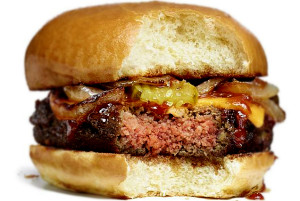
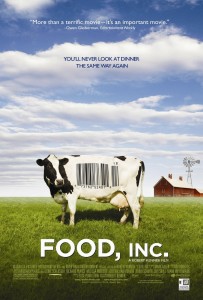
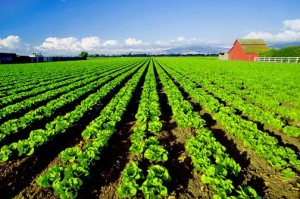

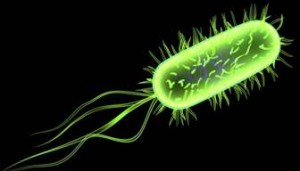
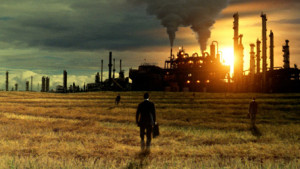

 Food, something humans consume in order to support the body. Historically, humans hunted and gathered, or farmed food in order to stay alive. Today, with the advances in technology and continuous increase of the world’s population, the food is supplied to us by the big bad food industry. The food industry is a very dangerous place. Much like every other business, big corporations are in charge, and that is not always a good thing. We are blinded by the lies told to us by food corporations and that needs to stop. It is time everyone knows the truth about the food industry. Food safety is a big issue and it is not regulated as well as it should be.
Food, something humans consume in order to support the body. Historically, humans hunted and gathered, or farmed food in order to stay alive. Today, with the advances in technology and continuous increase of the world’s population, the food is supplied to us by the big bad food industry. The food industry is a very dangerous place. Much like every other business, big corporations are in charge, and that is not always a good thing. We are blinded by the lies told to us by food corporations and that needs to stop. It is time everyone knows the truth about the food industry. Food safety is a big issue and it is not regulated as well as it should be. One of the fastest growing markets in the food industry is the organic market. We have been sold on this idea that organic foods are the greatest thing in the world. We have been told that they are less fattening, provide more nutrients, and taste better than nonorganic products. Well how much good do organic foods really do for us?
One of the fastest growing markets in the food industry is the organic market. We have been sold on this idea that organic foods are the greatest thing in the world. We have been told that they are less fattening, provide more nutrients, and taste better than nonorganic products. Well how much good do organic foods really do for us? 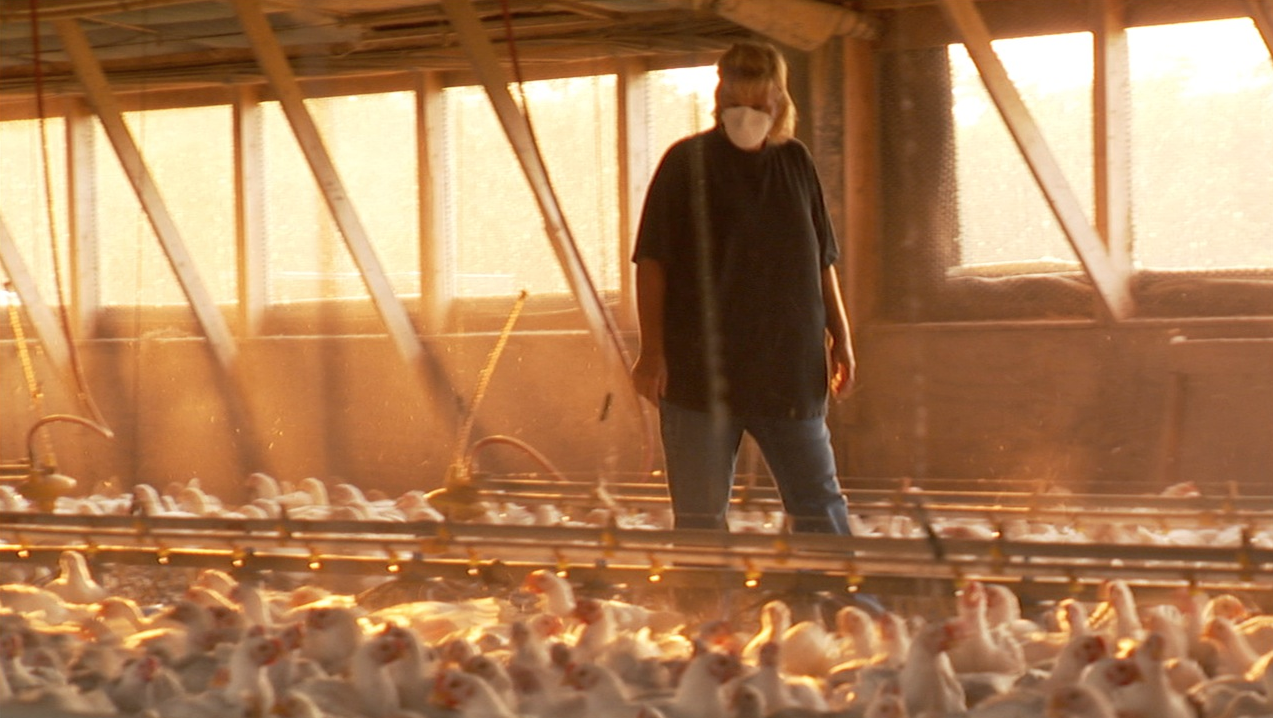 We assume that packaged food is always safe to eat, but that is not a good assumption. Marion Nestle is a Professor of Nutrition, Food Studies, and Public Health at New York University, and in her article
We assume that packaged food is always safe to eat, but that is not a good assumption. Marion Nestle is a Professor of Nutrition, Food Studies, and Public Health at New York University, and in her article  While big corporations are at fault for many of the food safety issues, the real culprit is the Federal Government. The Federal Government has ties to the to all the big food corporations and that is not good.
While big corporations are at fault for many of the food safety issues, the real culprit is the Federal Government. The Federal Government has ties to the to all the big food corporations and that is not good.